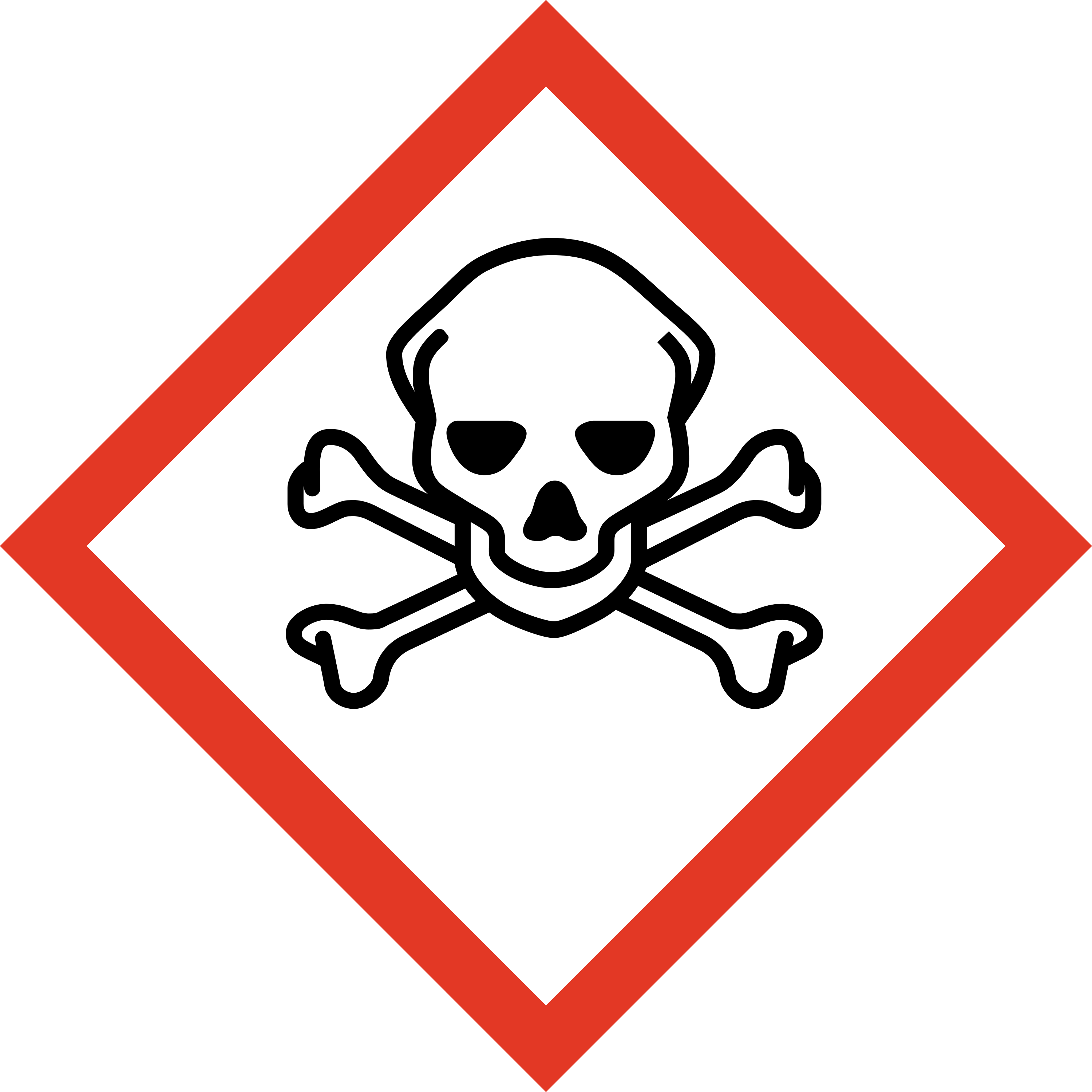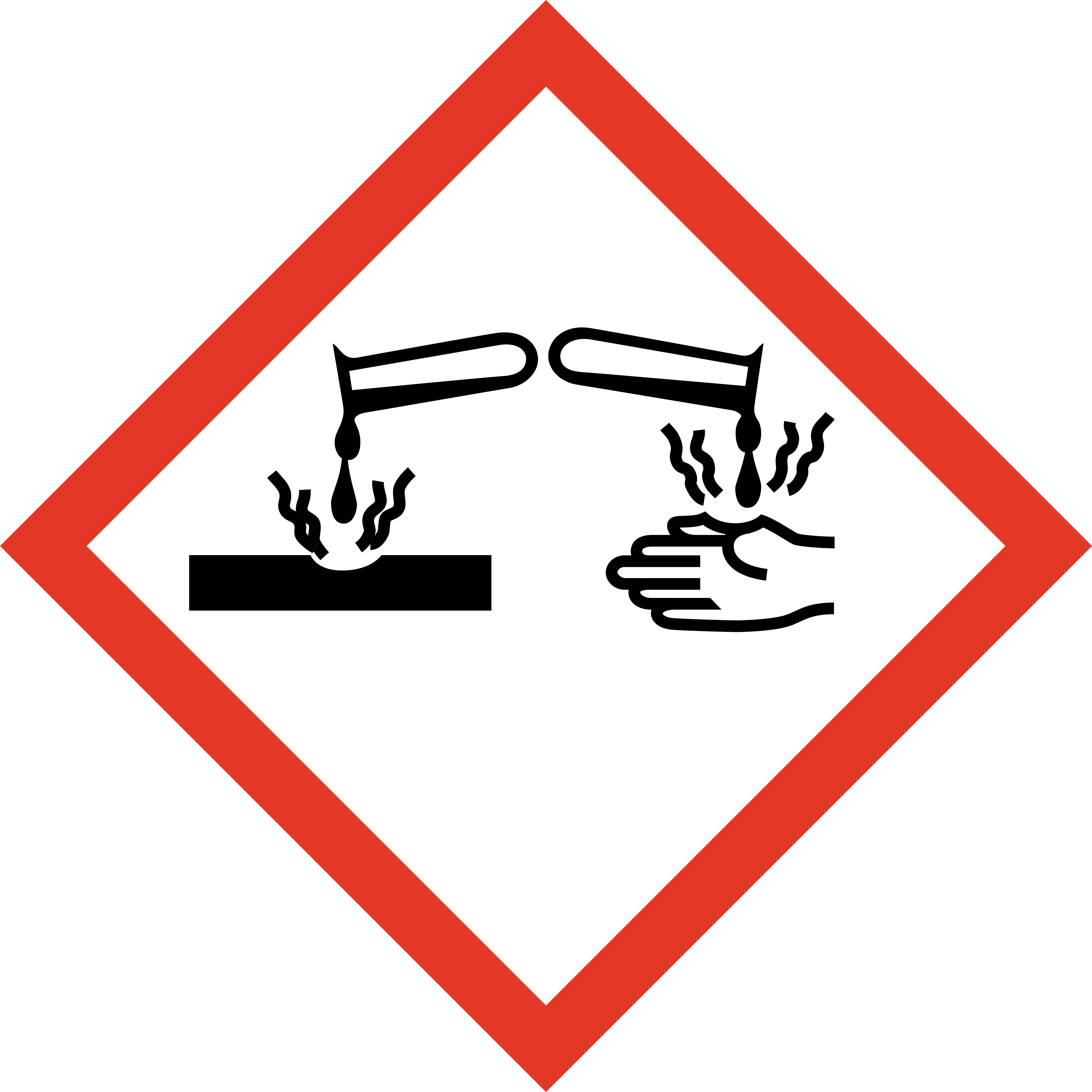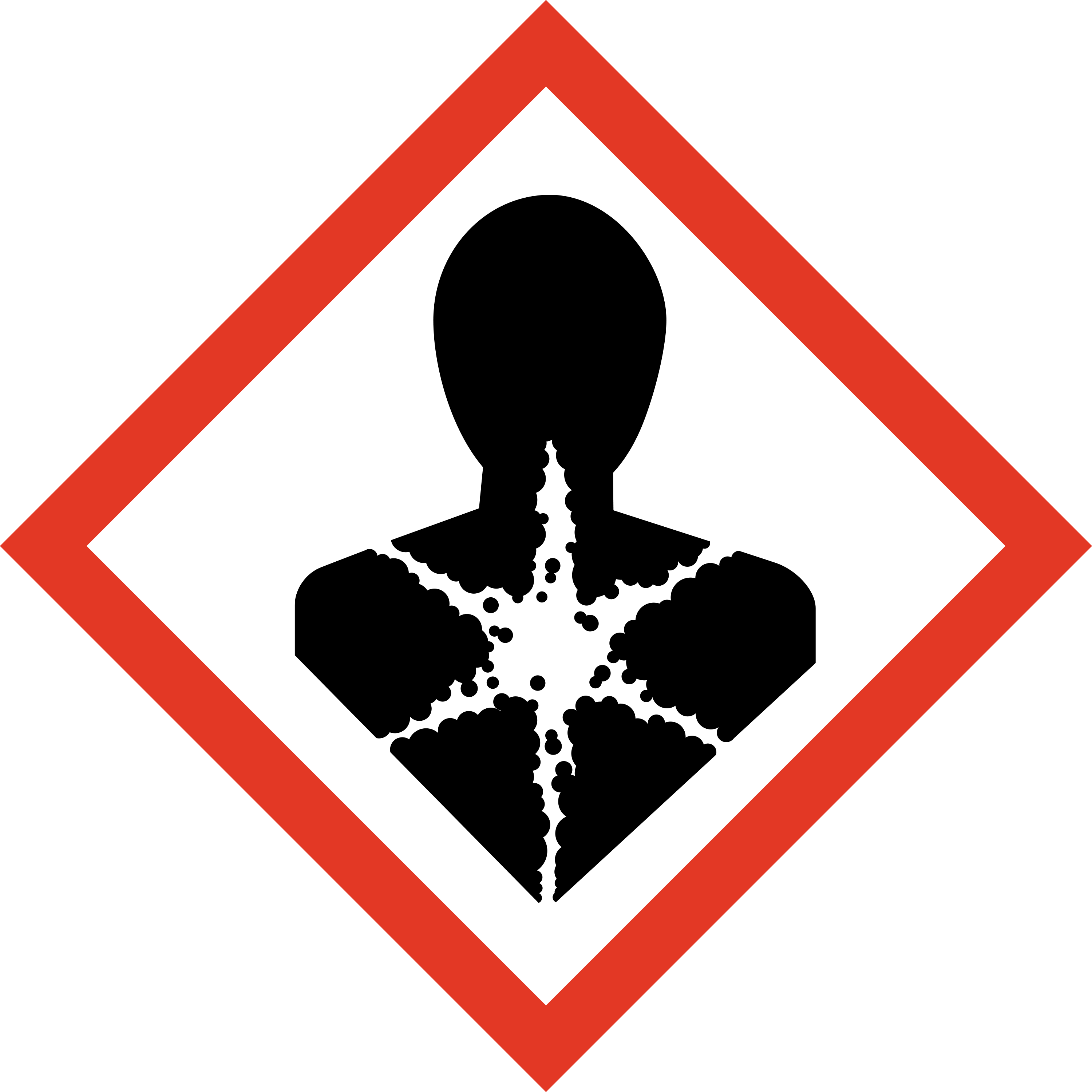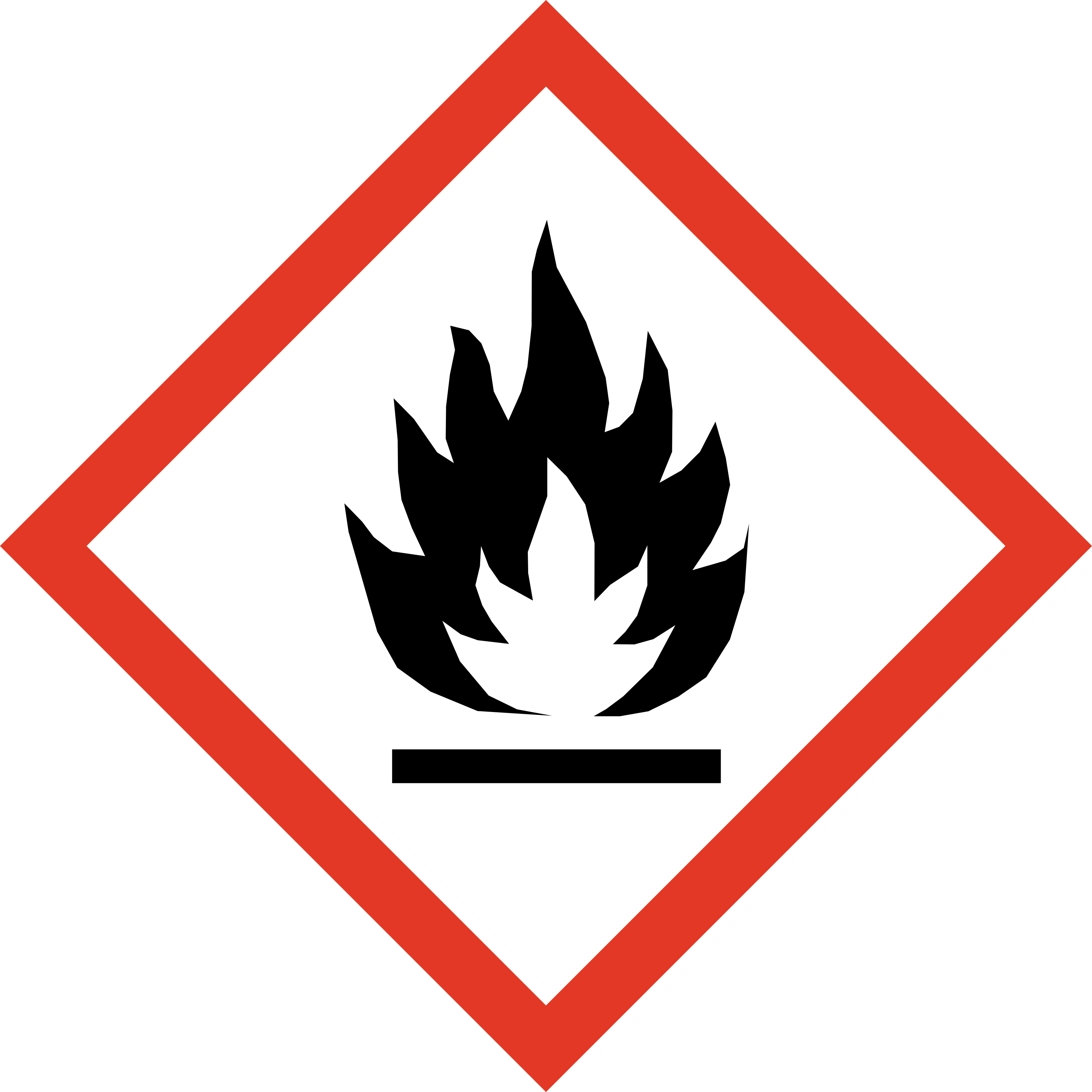Handling dangerous chemicals
Hazard pictograms
The European Regulation (EC) No 1272 of 2008 on the “Classification, Labelling and Packaging of substances and mixtures” commonly known as the CLP regulation standardized the then existent hazard pictograms and also changed the risk phrases to hazard statements. Consequently, under this regulation, hazard pictograms are systematically accompanied by hazard statements that take the form of a number (e. g. H200, H315). These hazard statements are used to help identify more precisely the danger posed by the substance, whereas the pictogram is used to quickly identify the hazard category. Thus, it is important to know or be able to quickly find the meaning of pictograms and hazard statements.
According to this regulation, hazards are divided into three categories: physical hazards, health hazards and environmental hazards.
| Pictogram | Meaning | e.g. Hazard statements |
|---|---|---|

|
Toxic substances category 1, 2, 3 |
H300 Fatal if swallowed H301 Toxic if swallowed H310 Fatal in contact with skin H311 Toxic in contact with skin H330 Fatal if inhaled H331 Toxic if inhaled |
| Pictogram | Meaning | e.g. Hazard statements |
|---|---|---|

|
Toxic substances category 4 |
H302 Harmful if swallowed H312 Harmful in contact with skin H332 Harmful if inhaled H336 May cause drowsiness or dizziness H315 Causes skin irritation H317 May cause an allergic skin reaction |
| Pictogram | Meaning | e.g. Hazard statements |
|---|---|---|

|
Corrosive substances |
H314 Causes severe skin burns and eye damage H318 Causes serious eye damage |
| Pictogram | Meaning | e.g. Hazard statements |
|---|---|---|

|
Subtances that are mutagenic, carcinogenic, reprotoxic or toxic to organs |
H350 May cause cancer H351 Suspected of causing cancer H340 May cause genetic defects H341 Suspected of causing genetic defects H360 May damage fertility or the unborn child H361 Suspected of damaging fertility or the unborn child H334 May cause allergy or asthma symptoms or breathing difficulties if inhaled H304 May be fatal if swallowed and enters airways H370 Causes damage to organs H371 May cause damage to organs |
| Pictogram | Meaning | e.g. Hazard statements |
|---|---|---|

|
Toxic substances that are harmful to the environment |
H400 Very toxic to aquatic life H410 Very toxic to aquatic life with long-lasting effects H411 Toxic to aquatic life with long-lasting effects |
| Pictogram | Meaning | e.g. Hazard statements |
|---|---|---|

|
Harmful to the ozone layer | H420 Harms public health and the environment by destroying ozone in the upper atmosphere |
| Pictogram | Meaning | e.g. Hazard statements |
|---|---|---|

|
Explosive or self-reactive substances |
H200 Unstable explosive H201 Explosive; mass explosion hazard H202 Explosive; severe projection hazard H203 Explosive; fire, blast or projection hazard H204 Fire or projection hazard |
| Pictogram | Meaning | e.g. Hazard statements |
|---|---|---|

|
Corrosive substances | H290 May be corrosive to metals |
| Pictogram | Meaning | e.g. Hazard statements |
|---|---|---|

|
Oxidizing substances |
H270 May cause or intensify fire; oxidizer H271 May cause fire or explosion; strong oxidizer H272 May intensify fire; oxidizer |
| Pictogram | Meaning | e.g. Hazard statements |
|---|---|---|

|
Compressed gas |
H280 Contains gas under pressure; may explode if heated H281 Contains refrigerated gas; may cause cryogenic burns or injury |
| Pictogram | Meaning | e.g. Hazard statements |
|---|---|---|

|
Flammable substances |
H220 Extremely flammable gas H222 Extremely flammable aerosol H223 Flammable aerosol H224 Extremely flammable liquid and vapour H225 Highly flammable liquid and vapour H226 Flammable liquid and vapour |




